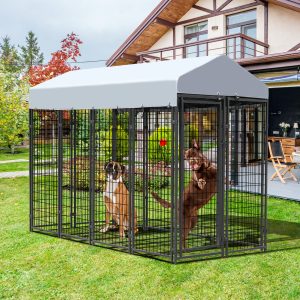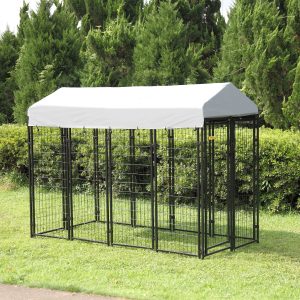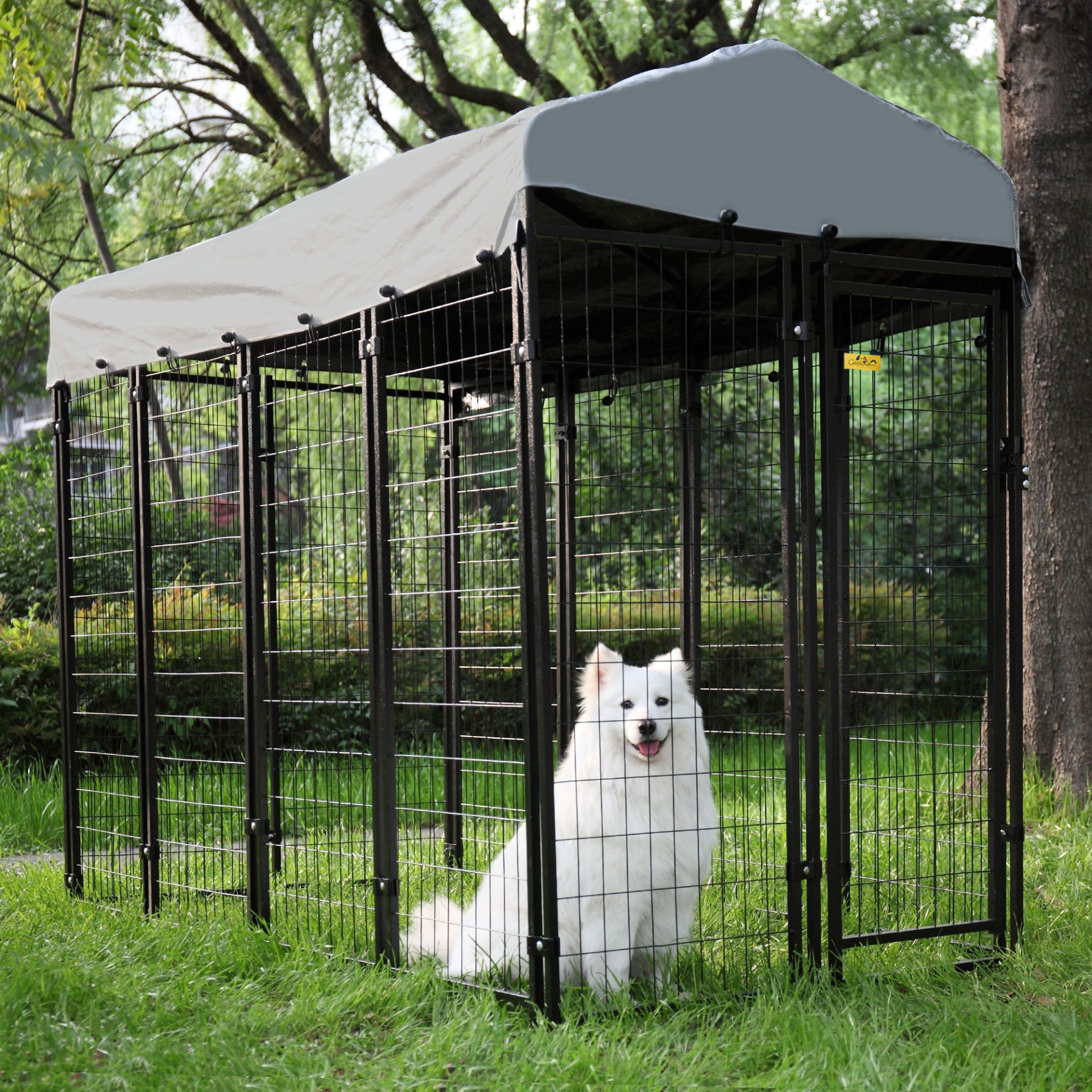Crate training your puppy takes advantage of the dog’s natural tendency to seek out a comfortable, calm, and safe location when their surroundings become too loud or overpowering. It’s a useful tool for keeping dogs from chewing on household goods or during housetraining. Crates are also a secure method of transporting your dog in the automobile.
Crating caution
A crate is not a miraculous cure for ordinary canine behavior. A dog may feel imprisoned and frustrated if it is used incorrectly. Crates will not be an option for some pets.
•Crates can be used to control behavior but should never be used to punish. For example, putting your dog in a crate with an engaging toy before visitors arrive is more successful than waiting for misbehavior and then putting your dog away. Regardless of the timing, enticing your dog into the crate with treats until they enjoy going in on their own will ensure a pleasant association with it.
- Do not leave your dog in the crate for an extended period of time. A crated dog does not get enough exercise or human connection and may become unhappy or agitated. To lessen the amount of time your dog spends in the crate each day, you may need to adjust your schedule, hire a pet sitter, or enroll your dog in a daycare facility. Furthermore, crates are not the only available tool. If you want to keep your puppy from chewing on items or having accidents at night, you can put a tether in your bedroom so they can move about freely but can’t escape while you’re sleeping.
- • Puppies under the age of six months should not be confined to a crate for more than three or four hours at a time. They can’t keep their bladders or bowels controlled for that long. The same is true for mature dogs who are being housetrained.
- • Crate your dog until he or she is able to be alone in the house without having accidents or developing destructive habits. You can gradually transition your dog from a crate to an enclosed part of your home, such as your kitchen, before allowing them access to the entire house while you are away.
- • The crate should always have a comfy bed in it, and the door should be left open when you’re home so your dog may enter it when they need a secure place. This is also a sign that your dog requires some alone time. Teach youngsters and visitors to leave your dog alone when he or she enters their box.
- • A crate can be your dog’s den, but just as you wouldn’t spend your entire life in one area of your house, so should your dog spend the majority of their time in a crate.

The training process
Crate training might take days or weeks depending on your dog’s age, temperament, and previous experiences. Keep two things in mind when crate training: the crate should always be related to something pleasurable, and training should be done in little steps. Take it gradually.
Step 1: Introduce your dog to the crate
Place the crate in a place where your family spends a significant amount of time, such as the family room. Put a nice blanket or bed in the crate. Allow the dog to explore the crate at their leisure by removing the door or propping it open. Some dogs are naturally interested and will begin napping in the crate right away.
• Bring them over to the crate and speak to them politely if yours isn’t among them. Check that the crate door is open and securely fastened so that it does not hit and frighten your dog.
• Continue tossing treats inside the kennel until your dog enters quietly to retrieve the food. If they aren’t interested in the treats, try including a favorite toy. This stage could last a few seconds or several days.
Step 2: Feed your dog meals in the crate
After introducing your dog to the crate, start offering regular meals near it. This will create a positive relationship with the crate.
• If your dog easily enters the crate when you start Step 2, place the food dish or interactive puzzle toy packed with food all the way to the back of the crate. • If they are still reluctant to enter, position the dish only as far inside as they will go without becoming terrified or upset. Each time you feed them, move the dish further back in the crate.
•Once your dog is comfy in their box, close the door and let them eat. When doing this for the first time, open the door as soon as they finish their meal.
•If they start whining to be let out, you may have extended the time too quickly. Next time, try leaving them in the crate for a shorter period of time.
Step 3: Practice with longer crating periods
When your dog is eating their normal meals in the crate and exhibiting no signs of fear or anxiety, you can confine them there for short periods of time while you are at home.
• Call them over to the crate and reward them with a goodie.
• Use a speech cue to invite them in, such as “crate.” Encourage them by holding a reward in your hand and pointing to the inside of the crate.
•When your dog enters the crate, give them a treat and close the door.
• Sit quietly near the container for five to ten minutes before going into another room. Return, sit quietly for a few moments, and then let them out.
• Repeat this process several times a day, gradually increasing the amount of time you leave them in the crate and the amount of time you’re out of sight.
• Once your dog can stay quietly in the crate for about 30 minutes with you mostly out of sight, you can start leaving them crated when you’re gone for short periods of time and/or letting them sleep there at night. This could take days or weeks.

Step 4, Part A: Crate your dog when you leave
When your dog is able to spend around 30 minutes in the crate without becoming anxious or fearful, you can start leaving them crated for brief periods of time when you leave the house.
• Use your standard command and a goodie to place them in the crate. You could also keep them in the crate with a few secure toys.
•Change the time you put your dog in the crate during your “getting ready to leave” routine. Although they should not be crated for an extended period of time before leaving, you can crate them anywhere from five to twenty minutes before leaving.
• Don’t make your departures emotional or long—they should be brief. Briefly praise your dog, give them a treat for entering the crate, and then quietly depart.
When you get home, don’t reinforce your dog’s excitement by responding to them enthusiastically. Keep your arrivals as low-key as possible to avoid heightening their concern about when you will return. Continue to crate your dog when you’re home for brief amounts of time so they don’t associate crating with being alone.
Step 4, Part B: Crate your dog at night
Use your regular command and a treat to put your dog in the crate. If you have a puppy, it may be best to keep the crate in your bedroom or a neighboring corridor at first. Puppies frequently need to go outdoors to relieve themselves during the night, and you’ll want to be able to hear your puppy beg to be let out. Older dogs should be kept nearby at first so they don’t identify the crate with social isolation.
Once your dog is resting happily through the night with the crate close by, you can gradually move it to the area you want, however any time spent with your dog—even sleep time—is an opportunity to develop your bond with your pet.


